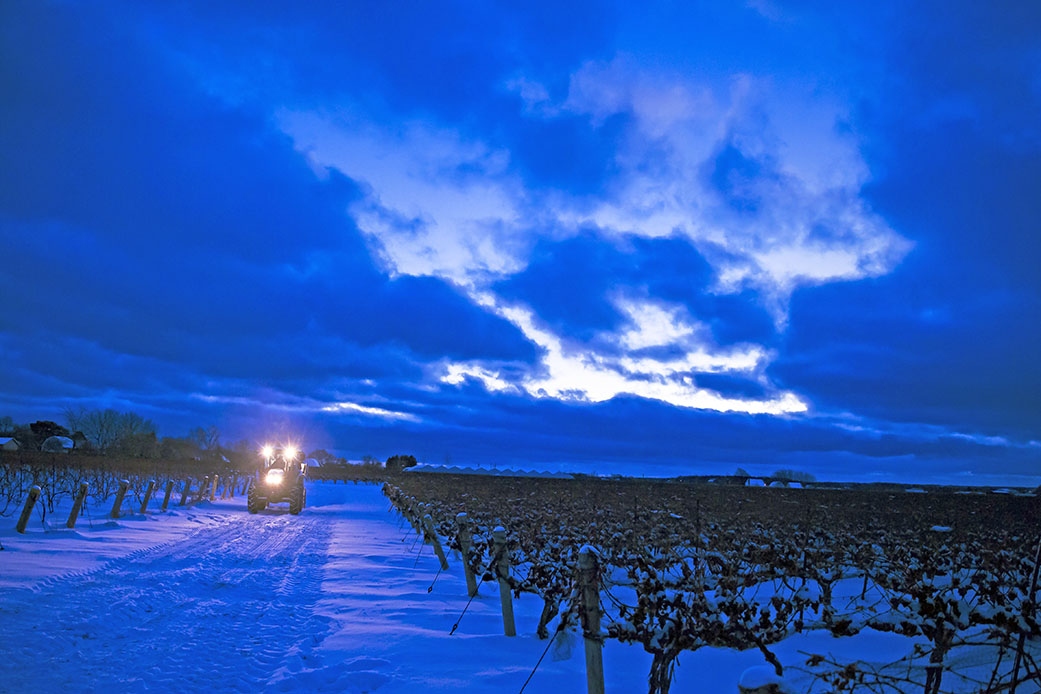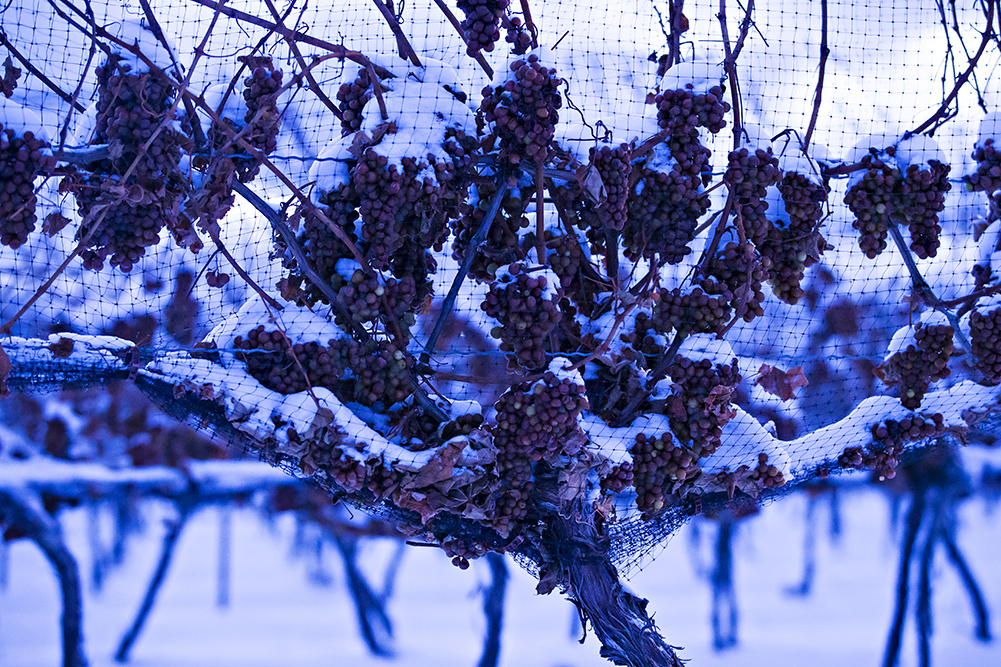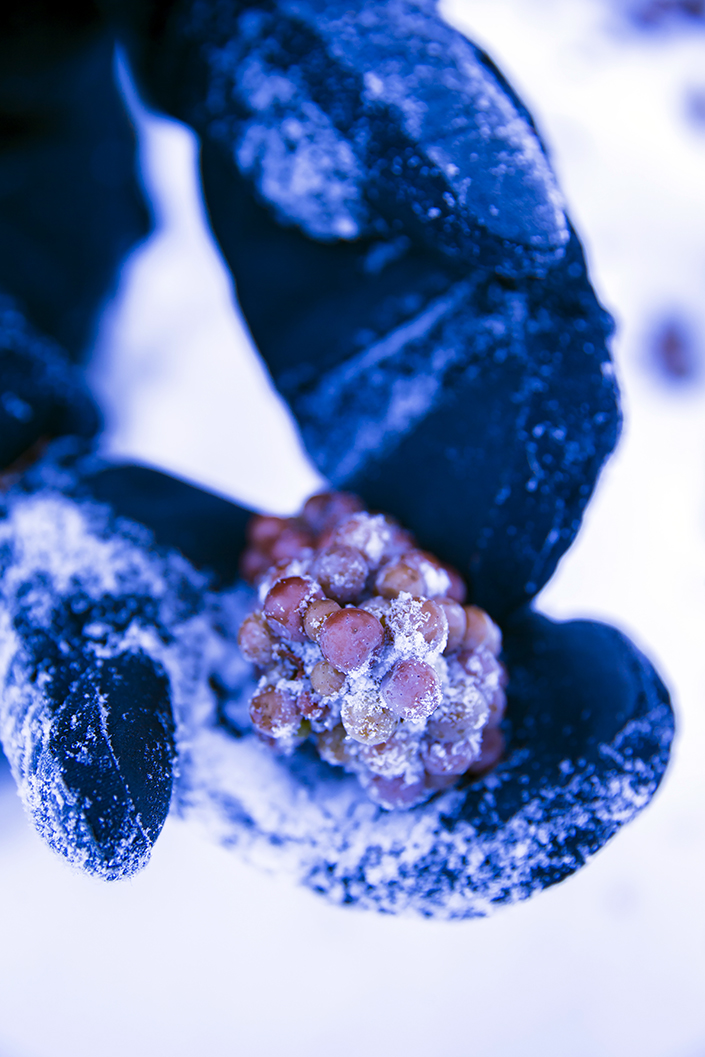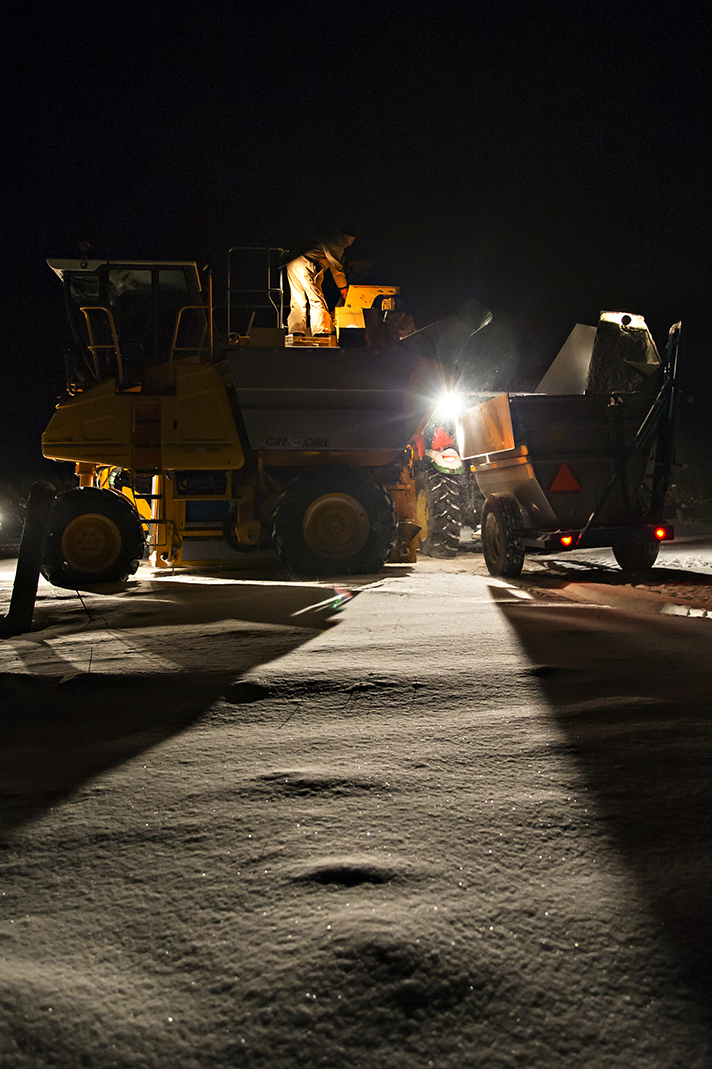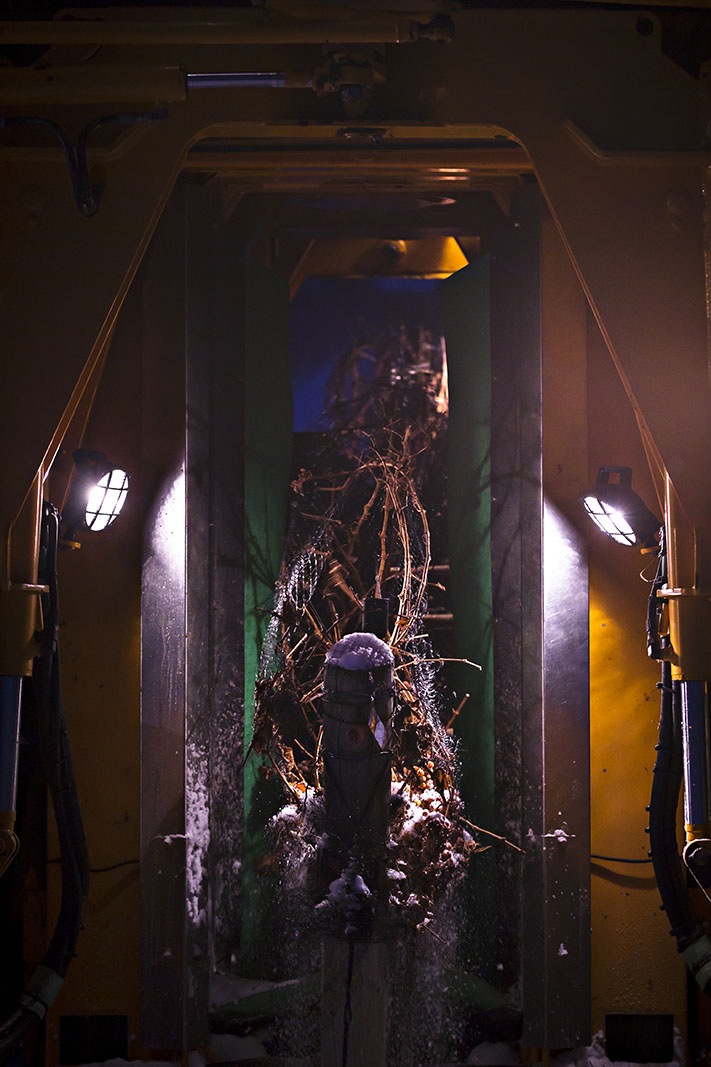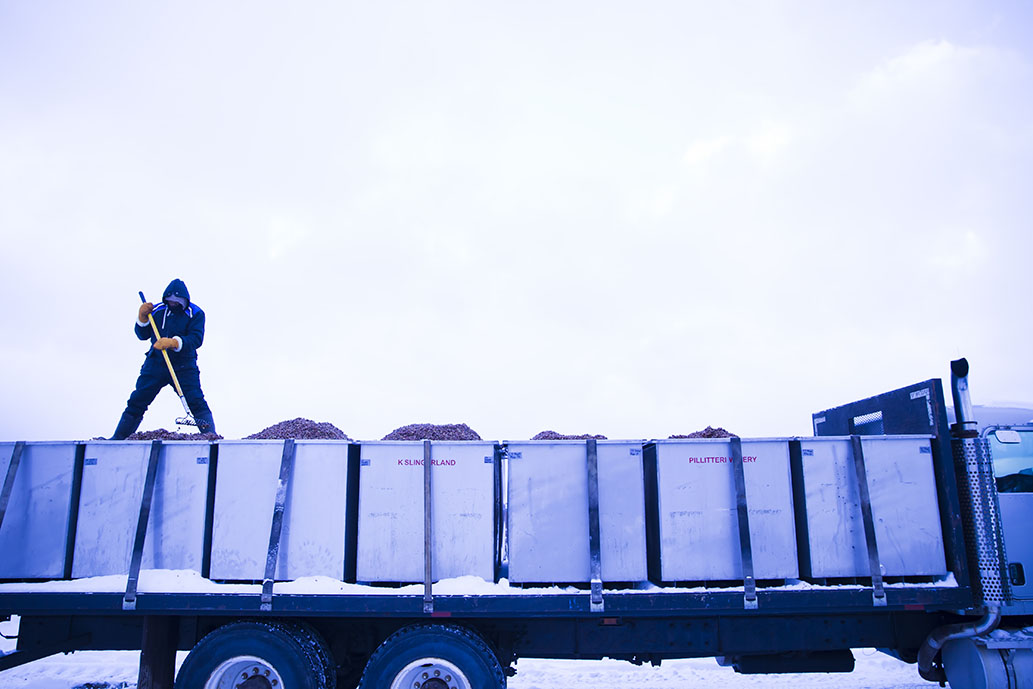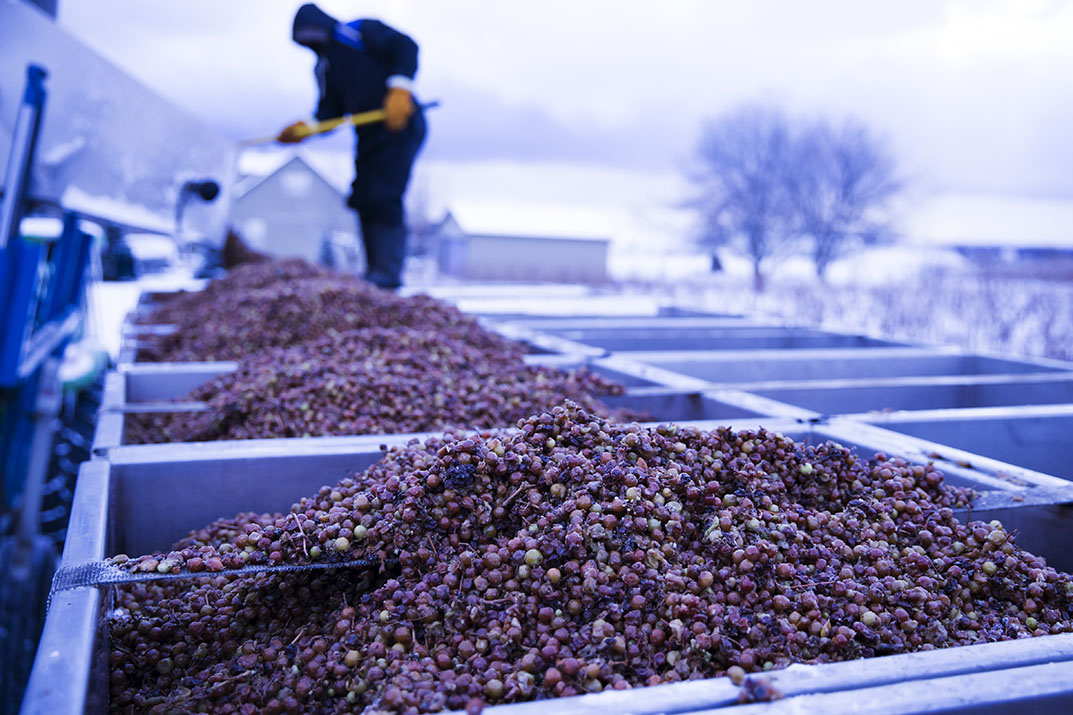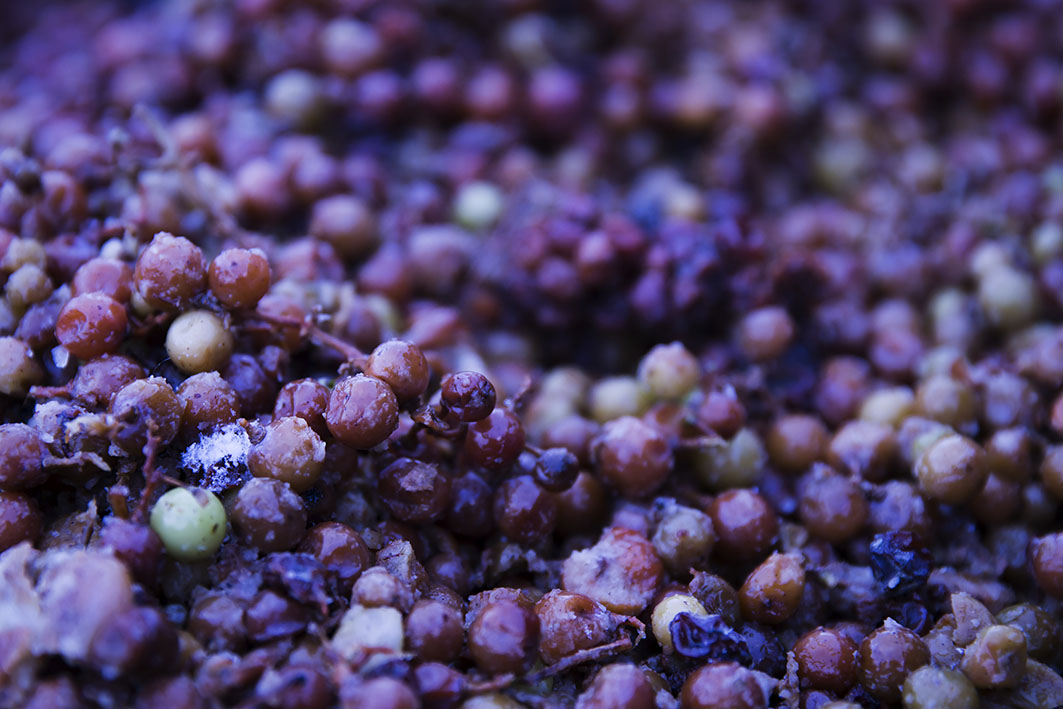Edible Toronto
Under the Night Sky
Photo by Aaron Lynett
Its a race against time and Mother Nature. If temperatures warm up, the grapes won’t meet the standard for pressing and creating the sweet elixir.
Slingerland is constantly watching the weather before making a call to harvest the grapes, but much of the decision lies in feeling the grapes by hand. They need to feel just right and leave only a few drops of juice on his glove when squeezed.
Icewine grapes are frozen solid, and when pressed, only the juice comes out — the majority of the grape’s mass is water and remains in the press as ice.
The pressure used to extract juice from frozen grapes is much higher than that used for grapes harvested during the regular season.
Slingerland runs his mechanical harvester up and down the rows of vineyard, mostly during the night when the temperatures are coldest. It usually takes a few days to complete a season’s ice wine harvest.
A truck load of frozen grapes, ready to go.
The very first round of grapes is often pressed immediately and the Brix is measured before the harvest is continued.
Winemakers are looking for juice with a range of 35 to 39 degrees Brix — which is roughly the percentage of sugar in the pressed juice.

